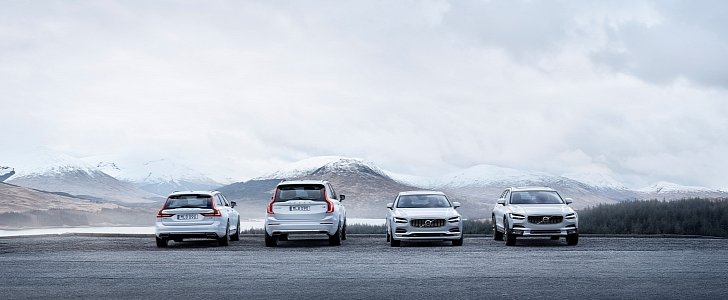All those who were quick to sing Volvo's swan song once the company was acquired by the Chinese at Geely must now be eating their hats and promising never to use their foolproof prediction abilities again.
Ever since the new XC90 SUV came to market, Volvo has been on an upwards trajectory whose end doesn't appear to be in sight just yet. And it's not like the company didn't take some risks, primarily with the decision to use only two-liter four-cylinder engines on its top range of models. And yet, with some clever engineering to mask the low displacement and that beautiful Swedish design, Volvo has pulled it through.
There's still a long way to go until the Swedes can battle with the holy trinity from Germany - Audi, BMW, and Mercedes-Benz - regarding actual sales, but there are a few areas where Volvo is already above its competition. Residual values, for example.
The way it holds its value over time is an important indicator for a premium vehicle because it's a testament to its build quality and the timelessness of its design. It also confirms the vehicle was pretty technologically advanced in its time, making it relevant a few years later as well.
Since all Volvo vehicles in the 90 range are too recent for any relevant hard data on their residual values, the numbers are made by estimations from specialists at CAP HPI. According to their forecast, the XC90 SUV (D5 engine and Momentum trim) will be worth 48.7 percent of its initial value after three years and 60,000 miles (97,000 km). Compared to the competition from Audi's Q7, (46.8 percent) BMW's X5 (43.5 percent), and Mercedes-Benz's GLE (42.1 percent), the Swede is ahead by a comfortable margin.
The more recent S90 sedan and V90 wagon also fare more than decently. The S90 has an estimated value retention of 39.8 percent, better than Audi A6's 36.2 percent but worse than similar models from BMW (41.8 percent) and Mercedes-Benz (40.9 percent). The V90 wagon managed to come in in second with 41.2 percent (or 41.8, depending on trim) behind only Mercedes-Benz's E-Class Estate (42.5 percent).
What all this means is that Volvo is back in business in the premium segment and it's more competitive than ever. With the new XC60 just over the horizon and other models that will surely follow, the Germans have a difficult fight on their hands.
There's still a long way to go until the Swedes can battle with the holy trinity from Germany - Audi, BMW, and Mercedes-Benz - regarding actual sales, but there are a few areas where Volvo is already above its competition. Residual values, for example.
The way it holds its value over time is an important indicator for a premium vehicle because it's a testament to its build quality and the timelessness of its design. It also confirms the vehicle was pretty technologically advanced in its time, making it relevant a few years later as well.
Since all Volvo vehicles in the 90 range are too recent for any relevant hard data on their residual values, the numbers are made by estimations from specialists at CAP HPI. According to their forecast, the XC90 SUV (D5 engine and Momentum trim) will be worth 48.7 percent of its initial value after three years and 60,000 miles (97,000 km). Compared to the competition from Audi's Q7, (46.8 percent) BMW's X5 (43.5 percent), and Mercedes-Benz's GLE (42.1 percent), the Swede is ahead by a comfortable margin.
The more recent S90 sedan and V90 wagon also fare more than decently. The S90 has an estimated value retention of 39.8 percent, better than Audi A6's 36.2 percent but worse than similar models from BMW (41.8 percent) and Mercedes-Benz (40.9 percent). The V90 wagon managed to come in in second with 41.2 percent (or 41.8, depending on trim) behind only Mercedes-Benz's E-Class Estate (42.5 percent).
What all this means is that Volvo is back in business in the premium segment and it's more competitive than ever. With the new XC60 just over the horizon and other models that will surely follow, the Germans have a difficult fight on their hands.






